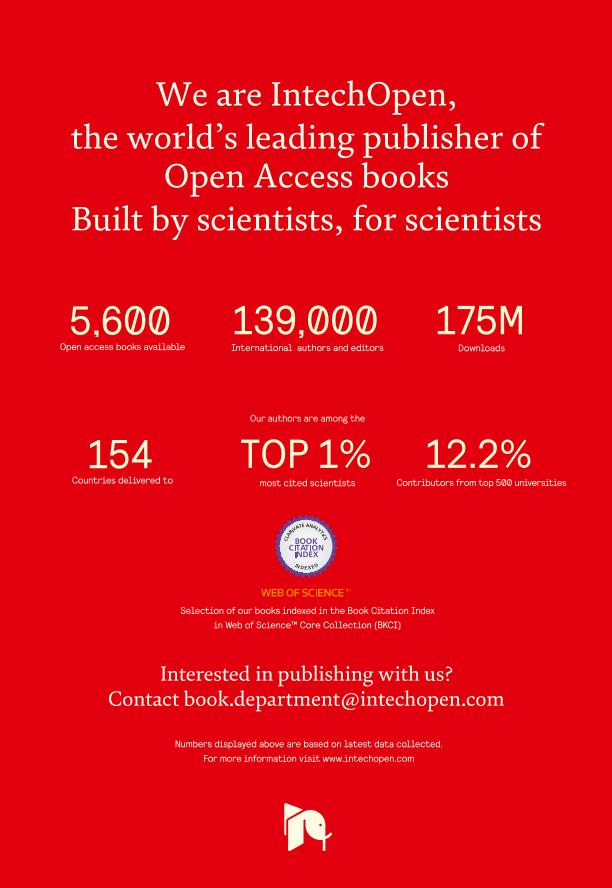Capítulo de Libro
Systemic and Local Tissue Response to Titanium Corrosion
Título del libro: Pitting Corrosion
Olmedo, Daniel Gustavo ; Tasat, Deborah; Duffó, Gustavo Sergio
; Tasat, Deborah; Duffó, Gustavo Sergio ; Cabrini, Rómulo; Guglielmotti, Maria Beatriz
; Cabrini, Rómulo; Guglielmotti, Maria Beatriz
 ; Tasat, Deborah; Duffó, Gustavo Sergio
; Tasat, Deborah; Duffó, Gustavo Sergio ; Cabrini, Rómulo; Guglielmotti, Maria Beatriz
; Cabrini, Rómulo; Guglielmotti, Maria Beatriz
Otros responsables:
Bensalah, Nasr
Fecha de publicación:
2012
Editorial:
IntechOpen
ISBN:
978-953-51-0275-5
Idioma:
Inglés
Clasificación temática:
Resumen
No metal or alloy is completely inert in vivo. Whether noble or passivated, all metals willsuffer a slow removal of ions from the surface, largely because of local and temporalvariations in microstructure and environment. The potential risk of corrosion and thepossible detrimental consequences of corrosion byproducts to tissues are issues of clinicalimportance. The biologic effect of corrosion is a public health concern for the community of patients who have a prosthesis (orthopedic and/or dental), since these prostheses remain inside the body over long periods of time. Evaluation of tissues around metallic devices is important since the presence of ions/particles and their potential local biological effects might affect implant outcome.Corrosion is one of the possible causes of implant failure after initial success. Metalcorrosion can affect close contact between the implant and the bone tissue(osseointegration).The issue of corrosion is not only a local problem since particles resulting from this processcould migrate systemically and deposit in target organs. The long term effects of thesedeposits are yet to be clarified. Mineral elements play a critical role in the physiology andpathology of biological systems. Titanium is a nonessential element; thus, the presence oftitanium in the body, titanium biokinetics, and the potential biological effects of titanium areof great interest to researchers. “In situ” degradation of a metallic implant is an unwanted event since it alters the structural integrity of the implant. Implant manufacturers must attempt to develop methods that reduce the diffusion of metal into the tissues in order to minimize the deleterious effects of corrosion.We believe further investigation, in particular long-term research, is necessary to advance inthe understanding of the factors involved in implant corrosion and establish basicguidelines for their use in clinical implantology. Handling and controlling corrosion of aSystemic and Local Tissue Response to Titanium Corrosion 109biomedical implant is essential from a biological, sanitary, metallurgic, economic, and socialviewpoint. Lastly, it is important to highlight that the adverse effects of corrosion described in thepresent chapter will not invariably occur in all patients with implants since biologicalresponse varies among individuals.
Palabras clave:
BIOMATERIALS
,
TITANIUM
,
PITTING CORROSION
Archivos asociados
Licencia
Identificadores
Colecciones
Capítulos de libros(OCA HOUSSAY)
Capítulos de libros de OFICINA DE COORDINACION ADMINISTRATIVA HOUSSAY
Capítulos de libros de OFICINA DE COORDINACION ADMINISTRATIVA HOUSSAY
Capítulos de libros(SEDE CENTRAL)
Capítulos de libros de SEDE CENTRAL
Capítulos de libros de SEDE CENTRAL
Citación
Olmedo, Daniel Gustavo; Tasat, Deborah; Duffó, Gustavo Sergio; Cabrini, Rómulo; Guglielmotti, Maria Beatriz; Systemic and Local Tissue Response to Titanium Corrosion; IntechOpen; 2012; 93-118
Compartir
Altmétricas



